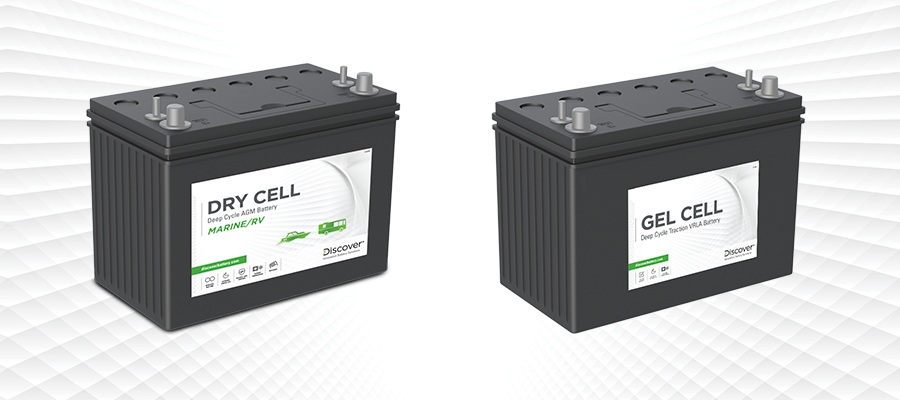
Can Discover VRLA DRY CELL AGM and GEL batteries be used as starting batteries?
Discover VRLA DRY CELL AGM batteries will work in starting applications as long as the vehicle's charging system voltage is regulated appropriately at between 14.4V and 14.7V.
Many vehicle regulators are set too high for GEL batteries, so GEL batteries are NOT suitable. AGM batteries excel as combination cranking & reserve capacity storage batteries. In low temperatures, AGM batteries will perform better than GEL electrolyte batteries. As a general rule, if you are going to use a “true” (not dual-purpose) deep-cycle AGM, GEL Flooded battery as a starting battery also, you should increase the Reserve Capacity (RC) or Amp Hour (AH) rating versus the original battery by between 20 and 30% to compensate for the lower cranking ability typical of true Deep Cycle batteries versus starting or dual-purpose batteries.
The total plate surface area dictates the batteries' total CCA. The plate thickness and active material amounts and densities dictate its ability in the dependable deep-cycle surfaces.
Even though modern engines with Electronic Fuel Injection (EFI) and electronic ignitions generally require much less total battery cold cranking power (CCA) to start, they typically have higher minimum voltage requirements that must be maintained under load for the EFI computer controls to work correctly. Therefore, more capacity (Ampere hour - AH or Reserve Capacity - RC) is also better and more critical than Cold Cranking Amps (CCA) to the engine’s performance because it is the RC or AH that is needed to maintain high voltage under load.
RULE of THUMB…To estimate the Cold Cranking ability of a true Deep Cycle 12V GEL or AGM battery, you can multiply the battery AH rating by 5 to 7 times.
To convert BCI Reserve Capacity to Ampere-Hours at the 25-amp rate, multiply RC by .4167. (100 Minutes of Reserve Capacity (RC) at 25A converts to approximately 42-AH of capacity at a 25A discharge rate (100 x .4167 = 41.67 AH)
